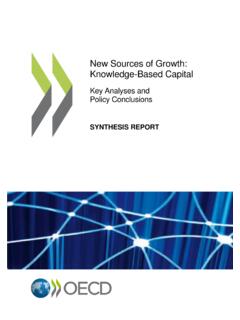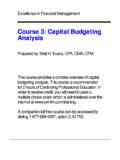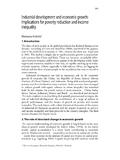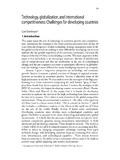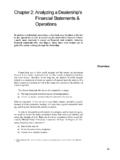Transcription of housing - Future Communities
1 Transferable Lessons from New TownsDCLG housingTransferableLessons fromthe New TownsTransferable Lessons fromthe New TownsDepartment of Planning Oxford Brookes UniversityJuly 2006 Department for Communities and Local Government: LondonOn 5th May 2006 the responsibilities of the Office of the Deputy Prime Minister (ODPM) transferred to theDepartment for Communities and Local Government (DCLG)Department for Communities and Local GovernmentEland HouseBressenden PlaceLondon SW1E 5 DUTelephone: 020 7944 4400 Website: Crown Copyright, 2006 Copyright in the typographical arrangement rests with the publication, excluding logos, may be reproduced free of charge in any format or medium for research, privatestudy or for internal circulation within an organisation.
2 This is subject to it being reproduced accurately and notused in a misleading context. The material must be acknowledged as Crown copyright and the title of thepublication other use of the contents of this publication would require a copyright licence. Please apply for a Click-UseLicence for core material at , or by writing to the Office ofPublic Sector Information, Information Policy Team, St Clements House, 2-16 Colegate, Norwich, NR3 1BQ. Fax:01603 723000 or email: you require this publication in an alternative format please email PublicationsPO Box 236 WetherbyWest YorkshireLS23 7 NBTel: 08701 226 236 Fax: 08701 226 237 Textphone: 08701 207 405 Email: online via the DCLG website: in the UK on material containing no less than 75% post-consumer 2006 Reference no.
3 06HC03919 CONTENTSE xecutive Structure of the of client s context new towns and the growth The New Research work on the New Lesson-drawing from the New Sustainable Communities : growth Areas policies and new towns and growth Areas: The potential for transferable Detailed literature search findings and Creating Economic achievement and Physical environment and End user Long-term in the literature by research directions and strategies95 Bibliography97 Appendix: Databases searched for new towns literature1103 Executive SummaryThis report presents the main findings from an extensive review of the literature dealingwith the English new towns (NT) 1:New TownsThe purpose of the research was to identify lessons from the NT programme that mightbe transferable to the growth Areas initiative.
4 The main assumption is that the lessonsderived from the literature on the new towns can be used as a starting point for bothpolicy and practice for the growth Areas (See Map 2 growth Areas). Although theseare clearly very different initiatives, they both involve development of essentiallynew settlements on a very large scale. Indeed, the growth Areas will be the largestprogramme of state Government sponsored development since the New 2: growth AreasThe research identified over 2000 articles, books, and other published sourcesspecifically referring to the new towns . From this around 200 sources have beenreviewed to see what answers they might provide to a series of questions suppliedby the ODPM under eight main themes:DeliveryFinanceCreating CommunitiesGovernanceEconomic Achievement and CompetitivenessPhysical Environment and DesignLong-term SustainabilityEnd user experienceOne key finding from this extensive literature review has been that there is, in fact, verylittle research-based material relating to the new towns programme as a whole, which,arguably, is both objective and useful.
5 There are some notable exceptions; but the teamwere surprised by this lack of quality in the literature. This is undoubtedly due to thefact that the NTs programme has never been reviewed Lessons from the New Towns5 Moreover, none of the literature, particularly the research articles, was written toaddress questions of transferability to a new context although some sources doexplicitly draw out lessons for the Future . Recognising this, we have treated our sourcesin their own terms whilst attempting to extrapolate from them conclusions that nightreasonably apply to the new context of the growth of the studyThe aim has been to identify, where possible, evidence-based findings from previousresearch and published experience, and from this to draw out key lessons relatingto specific questions under each theme.
6 These are fully set out in the themed sectionsin the brief has been to draw conclusions from the new towns experience that caninform policy and implementation of the growth Areas strategy. It is, of course , thecase that as this strategy develops further questions may emerge which might requireeither an additional review of the literature, or new primary research. This report alsomakes recommendations about such additional questions, and identifies gaps in theprimary research relating to the themes listed must be stressed that the study is equally concerned with both positive and negativetransferable lessons evidence of what did and didn t work is of equal importanceto this research approach has been entirely desk-based, relying on a comprehensivegathering together of research-based and grey literature, a review of this under thehighlighted themes.
7 And an extrapolation from this of transferable was identified from a wide range of electronic and other bibliographical datasources. This material was then reviewed through a number of stages to identify a coreset of texts that were evidence-based, or synthesised in some way evidence from othersources, and which dealt with the new towns as a programme, or had implications forthe new towns as a whole with respect to potentially transferable lessons. The materialwas read by a panel of experts at Oxford Brookes University in order to address thequestions proposed by the client; and on the basis of this interpretation the analysisand conclusions in the form of transferable lessons was draft report containing this material was made available to a number of externalreviewers whose views have been taken on board in the full final Lessons from the New Towns6 FindingsThe findings from the research are presented in the report in the form of over 60transferable lessons, a number for each theme.
8 These are presented with a briefobservation about their relative significance and whether they imply an action or simplysome acknowledgement as a background condition or factor that might inform futureplanning decisions for the growth Areas. A second set of findings are presented as anidentification of gaps in the evidence base, and as topics for possible Future is our view, for example, that the present research might be complemented by afurther desk-based review, specifically of literature in three areas:1. other types of large scale development the Expanded Towns, and new townsoutside of the new towns Programme in new towns comparison with other towns sharing the same regional, addition, we recommend a further study that pulls together current best-practicein terms of of the present researchIf the lessons contained in this report are to be applied, those charged with applyingthem may need some training or guidance on an area by area basis.
9 This would servetwo purposes: first to ensure the lessons are properly understood; and second to providean opportunity for the growth Area teams to raise issues specific to theirown development, planning, finance and locational Lessons from the New Towns71. IntroductionThis report presents findings from a review of the literature dealing with the UKgovernment s programme to develop 321statutory new towns under the 1946 andsubsequent new towns Acts. It focuses on the following themes:1. Delivery2. Finance3. Creating Communities4. Governance5. Economic Achievement and Competitiveness6.
10 Physical Environment and Design7. End user experience8. Long-term SustainabilityIt is based on a brief produced by and agreed with the Office of the Deputy research approach has been entirely desk-based, relying on a comprehensivecollection of research-based and grey literature. This has been reviewed under thehighlighted themes, and an extrapolation from this to transferable objective has been to identify, where possible, evidence-based findings from previousresearch and published experience, and distilling key lessons relating to specific questionsunder each theme.
